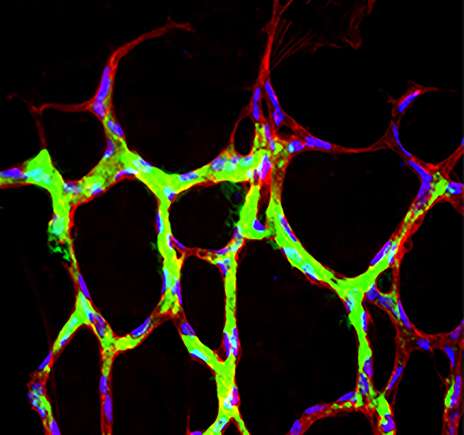Scientists capture cell 'crosstalk' during blood vessel development

The blood vessels that carry oxygen and nutrients throughout the body develop through a complex process of reactions—or crosstalk—between cells that is regulated by cell-specific gene expression. In a recent study published in Nature Communications, a Yale-led team of researchers identified a key mediator of this crosstalk and determined how it affects the formation of new blood vessels.
Working with models of mice and zebrafish, the researchers found that a tiny RNA molecule—microRNA139-5p—directs the crosstalk between two key receptors that dictate specialized cellular responses necessary for normal blood vessel growth. They also revealed how blood flow influences the crosstalk.
"We have a better understanding of how new blood vessels develop," said senior author Dr. Hyung J. Chun, associate professor of internal medicine (cardiology), who worked in conjunction with first authors Irinna Papangeli and Jongmin Kim, along with multinational collaborators. The findings have potential implications for any disease that involves new blood vessel formation, from cancer to heart disease.
More information: Irinna Papangeli et al. MicroRNA 139-5p coordinates APLNR-CXCR4 crosstalk during vascular maturation, Nature Communications (2016). DOI: 10.1038/ncomms11268

















